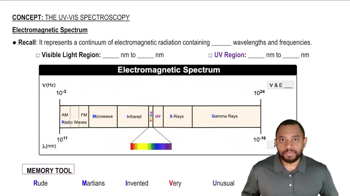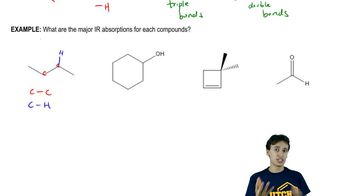For each of the following pairs of compounds, identify one IR absorption band that could be used to distinguish between them:
c. CH3CH2CH2OH and CH3CH2OCH3
d.
 Verified step by step guidance
Verified step by step guidance Verified video answer for a similar problem:
Verified video answer for a similar problem:



 16:47m
16:47mMaster Common IR Frequencies with a bite sized video explanation from Johnny
Start learning